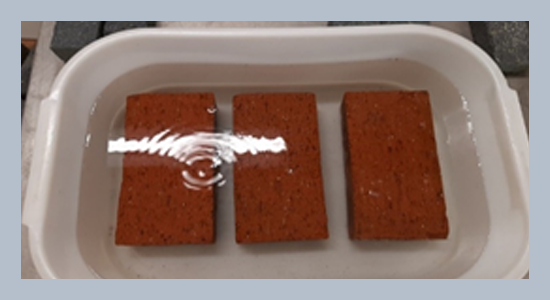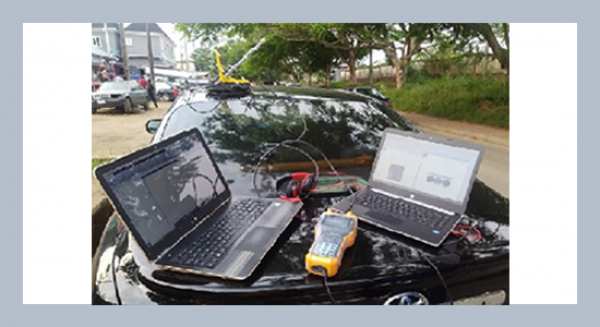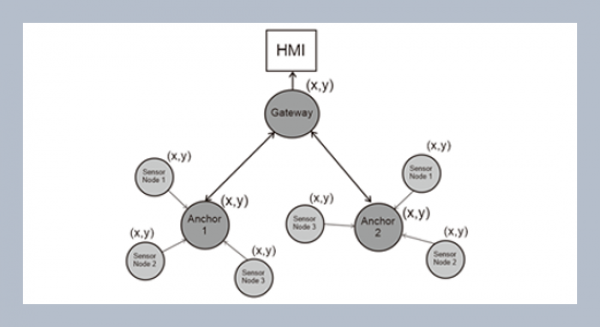REFERENCES
- Ahmed, M.M., El-Naggar, K.A.M., Dalia, T., Ayman, R., Hesham, S., Abdullah M. Z., Bassam, A.T., Ibrahim, M.M., Ayman, Y. 2021. Fabrication of thermal insulation geopolymer bricks using ferrosilicon slag and alumina waste, Case Studies in Construction Materials, 15, e00737, ISSN 2214-5095, https://doi.org/10.1016/j.cscm. 2021.e00737.
- Alfahdawi, I.H., Osman, S.A., Hamid, R., Al-Hadithi, A.I. 2018. Modulus of elasticity and ultrasonic pulse velocity of concrete containing polyethylene terephthalate (Pet) waste heated to high temperature. Journal of Engineering Science and Technology, 13, 3577–3592.
- Ali, Y., Mucahit, S., Ertugrul, E., Osman, G. 2021. Recycling and immobilization of zinc extraction residue in clay-based brick manufacturing, Journal of Building Engineering, 41, 102421, ISSN 2352–7102, https:// doi.org/10.1016/j.jobe.2021.102421.
- Aneke, F.I., Okonta, F.N., Ntuli, F. 2015. Geotechnical properties of marginal highway backfill stabilized with activated fly ash. PhD Thesis, Gauteng, South Africa: Department of Civil Engineering Science and Built Environment University of Johannesburg. [Google Scholar]
- Aneke, F.I., Awuzie, B. 2018. Conversion of industrial wastes into marginal construction materials, Acta Structilia, 2, 018, 25, 119–137, 10.18820/8820/24150487 /as25i2.5
- Aneke, F.I., Awuzie, B.O., Mostafa, M.M.H., Okorafor, C. 2021. Durability assessment and microstructure of high-strength performance bricks produced from PET waste and foundry sand. Materials 2021, 14, 5635. https:// doi.org/10.3390/ma14195635
- Aneke, F.I., Celumusa S. 2021. Strength and durability performance of masonry bricks produced with crushed glass and melted PET plastics, Case Studies in Construction Materials, 14, e00542, ISSN 2214-5095, https://doi.org/10.1016/j.cscm.2021.e00542.
- Aneke, F.I., Shabangu, C. 2021. Green-efficient masonry bricks produced from scrap plastic waste and foundry sand, Case Studies in Construction Materials, 14, 2021, e00515, ISSN 2214-5095, https://doi.org/10.1016/j.cscm.2021.e00515.
- Asteris, P.G. 2003. Lateral stiffness of brick masonry infilled plane frames. Journal of Structural Engineering 129, 1071–9.
- ASTM D559/D559M, 2015, Standard Test Methods for Wetting and Drying Compacted Soil-Cement Mixtures ASTM International, West Conshohocken, PA, 2021, www.astm.org
- ASTM D2166 / D2166M. 2016. Standard Test Method for Unconfined Compressive Strength of Cohesive Soil, ASTM International, West Conshohocken, PA, 2016, www.astm.org
- ASTM E986-04. 2017. Standard Practice for Scanning Electron Microscope Beam Size Characterization, ASTM International, West Conshohocken, PA, 2017, www.astm.org
- ASTM D792-20. 2020. Standard Test Methods for Density and Specific Gravity (Relative Density) of Plastics by Displacement, ASTM International, West Conshohocken, PA, 2020, www.astm.org
- ASTM C583-15. 2021, Standard Test Method for Modulus of Rupture of Refractory Materials at Elevated Temperatures, ASTM International, West Conshohocken, PA, 2021, www.astm.org
- Benosman, A.S., Mouli, M., Taibi, H., Belbachir, M., Senhadji, Y., Bahlouli, H., Houivet, D. 2017. Chemical, mechanical, and thermal properties of mortar composites containing waste pet. Environmental Engineering and Management Journal, 16, 1489–1505. https://doi.org/10.30638/eemj.2017.162
- Chodankar, S.K., Savoikar, P.P. 2021. An Overview of Strength and Durability Aspects of Concrete Using PET Fibres. Lecture Notes in Civil Engineering, 75(July), 619–624. https://doi.org/10.1007/978-981-15-4577-1_53
- Chowdhury, S., Maniar, A.T., Suganya, O. 2013. Polyethylene Terephthalate (PET) Waste as Building Solution. International Journal of Chemical, Environmental & Biological Sciences (IJCEBS), 1, 2320–4087.
- Dacuba J, Cifrian E, Romero M, Llano T, Andrés A. Influence of unburned carbon on environmental-technical behaviour of coal fly ash fired clay bricks. Applied Sciences. 2022; 12, 3765. https://doi.org/10.3390/app12083765
- Dawood, A.O., AL-Khazraji, H., Falih, R.S. 2021. Physical and mechanical properties of concrete containing PET wastes as a partial replacement for fine aggregates. Case Studies in Construction Materials, 14, e00482. https://doi.org/10.1016/j.cscm.2020.e00482
- Dębska, B., Lichołai, L. 2015. The selected mechanical properties of epoxy mortar containing PET waste. Construction and Building Materials, 94, 579–588. https://doi.org/10.1016/j.conbuildmat.2015.07.031
- Eskom. 2009. Pricing Methodology on generation and pricing of electricity http://www.eskom.co.za/CustomerCare/TariffsAndCharges/Documents/Pricing_methodology.pdf
- Eyssautier-Chuine, S., Marin, B., Thomachot-Schneider, C., Fronteau, G., Schneider, A., Gibeaux, S., Vazquez, P. 2016. Simulation of acid rain weathering effect on natural and artificial carbonate stones. Environ. Earth Sci., 75, 748–759.
- Frank, I.A., Mohamed M.H.M., Walid, E.K. 2021. Pre-compression and capillarity effect of treated expansive subgrade subjected to compressive and tensile loadings, Case Studies in Construction Materials, 15, e00575, ISSN 2214-5095, https://doi.org/10.1016/j.cscm.2021.e00575.
- Gumaste, K.S., Nanjunda Rao, K.S., Venkatarama Reddy, B.V., Jagadish, K.S. 2007. Strength and elasticity of brick masonry prisms and wallettes under compression. Mater. Struct., 40, 241–253.
- Gürü, M., Çubuk, M.K., Arslan, D., Farzanian, S.A., Bilici, I. 2014. An approach to the usage of polyethylene terephthalate (PET) waste as roadway pavement material. Journal of Hazardous Materials, 279, 302–310. https://doi.org/10.1016/j.jhazmat.2014.07.018
- Hendry, A.W. 1998. Structural masonry, Macmillan, London.
- Houssame, L., Imad, M.K., Cherkaoui, A.K. 2021. Physicochemical, mechanical, and thermal performance of lightweight bricks with recycled date pits waste additives, Journal of Building Engineering, 34, 2021, 101867, ISSN 2352-7102, https://doi.org/10.1016/j.jobe.2020.101867.
- Kaushik, H.B., Rai, D.C., Jain, S.K. 2007. Stress-strain characteristics of clay brick masonry under uniaxial compression, J. Mater. Civ. Eng 19, 728–739.
- Kazmi SMS, Abbas S, Saleem MA, Munir MJ, Khitab A. 2016. Manufacturing of sustainable clay bricks: Utilization of waste sugarcane bagasse and rice husk ashes. Constr Build Mater 120, 29–41.
- Kadir, A.A., Maasom, N. 2013. Recycling sugarcane bagasse waste into fired clay brick. Zero Waste General, 1, 21–26
- Limami, H., Manssouri, I., Cherkaoui, K., Saadaoui, M., Khaldoun, A. 2020. Thermal performance of unfired lightweight clay bricks with HDPE & PET waste plastics additives. Journal of Building Engineering, 30, 101251. https://doi.org/10.1016/j.jobe.2020.101251
- Mary, L.P.N., Carolin, P., Kavya, M., Shone, G., Sneha, G. 2018. Energy efficient production of clay bricks using industrial waste, Heliyon, Volume 4, Issue 10, e00891, ISSN 2405-8440, https://doi.org/10.1016/j.heliyon.2018.e00891.
- Merritt, F.S. 2012. Building Engineering and Systems Design. Springer Science and Business Media, Berlin.
- Mohammed, A.A. 2017. Flexural behaviour and analysis of reinforced concrete beams made of recycled PET waste concrete. Construction and Building Materials, 155, 593–604. https://doi.org/10.1016/j.conbuildmat.2017.08.096
- Mohammed, A.A., Rahim, A.A.F. 2020. Experimental behaviour and analysis of high strength concrete beams reinforced with PET waste fibre. Construction and Building Materials, 244, 118350. https://doi.org/10.1016/j.conbuildmat.2020.118350
- SANS 227:2007 and SANS 1 575. 2007. The South African National Standard for burnt clay paving units, ISBN 978-0-626-19745-2
- Sharma, A. 2020. Use of waste plastic in concrete mixture as aggregate replacement. International Journal of Trend in Research and Development, 7, 147–149.
- Sh, K.A., El–Sherbiny, S.A., Abo El–Magd, A.A.M., Belal, A., Abadir, M.F. 2017. Fabrication of geopolymer bricks using ceramic dust waste, Construction and Building Materials, 157, 610–620, ISSN 0950-0618, https://doi.org/10.1016/j.conbuildmat.2017.09.052.
- Tiseo, L. 2021. Global PET bottle production 2004-2021, Statistica GmbH, accessed 27 February 2021, UPL: https://www.statista.com/statistics/723191/production-of-polyethylene-terephthalate-bottles-worldwide/
- Verma, R., Vinoda, K.S., Papireddy, M., Gowda, A.N.S. 2016. Toxic pollutants from plastic waste- A, Procedia Environmental Sciences, 35, 2016, 701–708, ISSN 1878–0296, https://doi.org/10.1016/j.proenv.2016.07.069.
- Wang, G., Cheng, Z., Tong, Z., Wang, F., Xie, S. 2016. The Influence of acid rain on the performance of building mortar. J. Shenyang Jianzhu Univ. (Nat. Sci.) 2016, 32, 658–678.
- Wang, L., Sun, H., Sun, Z., Ma, E. 2016. New technology and application of brick making with coal fly ash. J Mater Cycles Waste Manag 18, 763–770
- Wight, J.K., MacGregor, J.G. 2015. Reinforced concrete: mechanics and design. Pearson Education, New Jersey.















